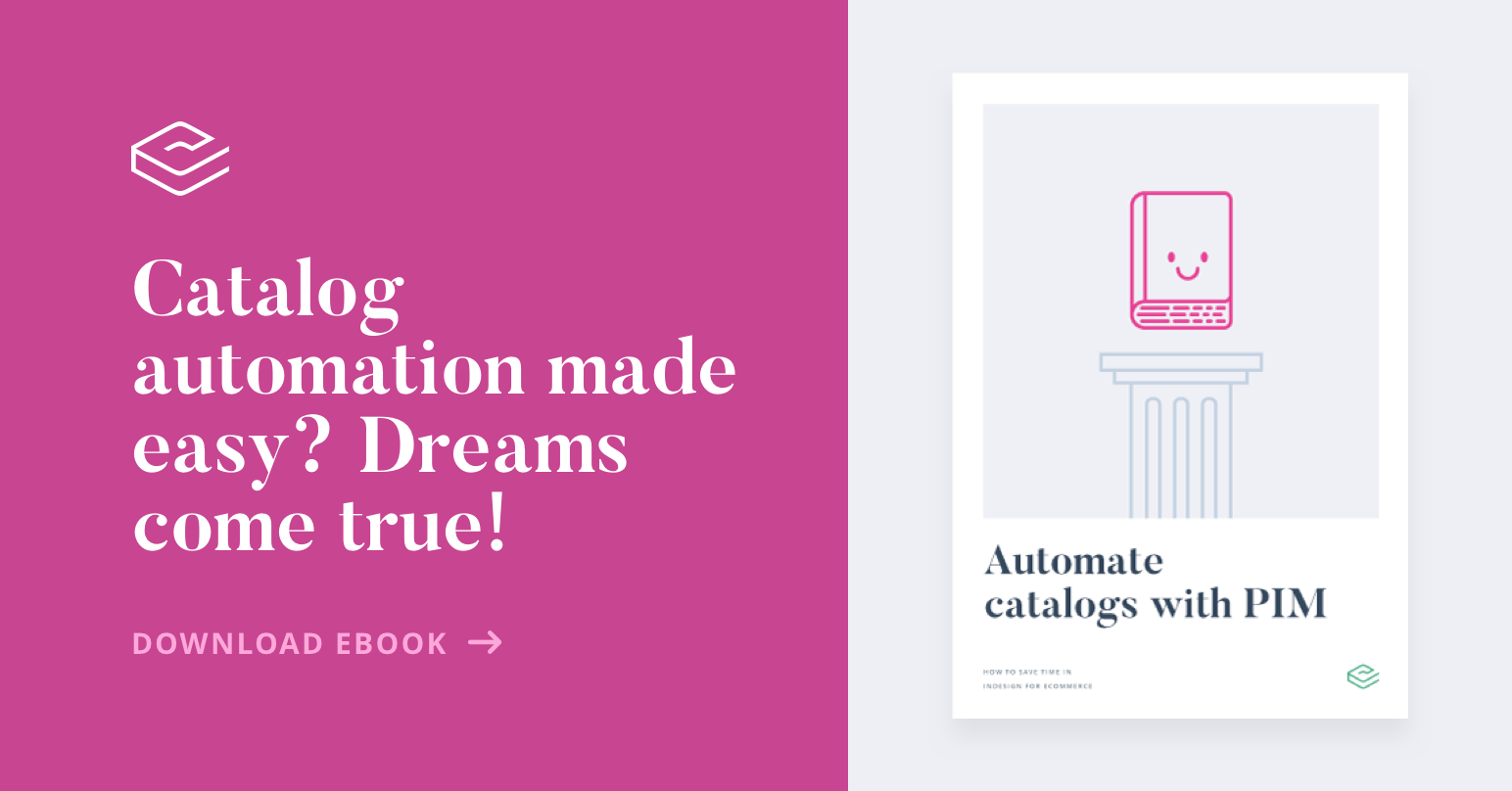
Catalog automation software is key to reducing errors and delays in your workflow.
With a centralized hub that manages your product data throughout the entire supply chain, you can create an optimized shopping experience that translates into increased traffic and better sales conversion.
6 tips for automating product catalogs
Centralize your product information
Store all your product information and media assets in a single repository. Identify the files and data you need faster, and ensure that data is up-to-date for all teams and departments across all platforms and countries.
PIM (Product Information Management) creates a single source of truth for your team and enables you to improve the quality and accuracy of your product data.
Define a team hierarchy
Create an optimized workflow and assign management and editing roles to prevent the overlapping of tasks. This will avoid inconsistencies in product data and reduce the margin for error.
PRO TIP: Daniel Lewis, CEO of LegalOn, provides insight into the use of AI in automated catalogs: "AI is revolutionizing how businesses create and manage product catalogs by automating tedious processes like data entry, content updates, and product categorization. This not only enhances efficiency but also ensures greater accuracy across multiple platforms. For businesses, it’s essential to ensure that as automation and AI are integrated into these processes, the data being managed remains compliant with privacy and industry regulations. Leveraging AI responsibly will allow companies to streamline catalog creation while maintaining trust with their customers."
Enrich the data
With product analytics tools, you can automatically detect data omissions and anomalies, then optimize these product attributes with bulk editing functions.
Improve catalog design
Optimize the efficiency of your data sheets and catalogs with catalog automation. Save costs and personnel with plugins that can create digital and printed catalogs instantly and ensure consistency of information across the distribution chain.
Standardize your channels
PIM detects and resolves format and information inconsistencies across your distribution and sales channels, enabling you to share error-free product information with different customers and team members in multiple languages.
Consolidate and connect
Once your product content is centralized and enriched, data can be connected to all channels with preconfigured connectors. Data can be homogenized across all sales channels, marketplaces and ecommerce platforms and be kept up-to-date and accurate with ease.
Automate your product catalogs with PIM
Sales Layer PIM creates automated and centralized catalogs instantly, ensuring you see success from your product pages and see improved positioning in search results.
Get started today with a free 30-day all-access trial of Sales Layer.







.jpg)
-1.webp?width=520&name=formulas-excel-gestion-inventario%20(1)-1.webp)



